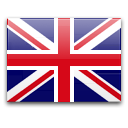- No products in the cart.
FAQs
WHY DOES MY DUVET LOOK SO FLAT WHEN I RECEIVE IT?
Down products are vacuum packed for shipping purposes, your duvet or pillow will take about 24 hours, sometimes more before it will puff up to its normal state.
WHY DOESN'T MY DUVET COVER THE ENTIRE MATTRESS?
If your mattress is between 8" to 12” deep then the corresponding size (queen duvet for a queen bed), should fit. If the mattress depth is between 13” and 16” then you would need to purchase the next size up in duvet, (king duvet for a queen bed) so that it will drape over sides.
We can also custom make any size duvet to fit your bed more precisely.
WHERE DOES DOWN AND FEATHER COME FROM?
According to the Down and Feather Association of Canada
Down and feathers are a by-product of the poultry industry. Geese and ducks are raised for food. The down and feathers that would otherwise be discarded are rigorously cleaned, and processed, before used as fill for products such as apparel, bedding, and upholstery.
Goose or Duck down: typically goose has larger down clusters than duck down, and therefore a higher fill power, as the geese are larger birds. Also there is much more duck down available than geese, hence the lower cost of duck down. However, a high quality duck down is better than a low quality goose down.
Eiderdown: is a well-known name for a type of extremely rare premium down. It must be hand collected from the nests of wild eider ducks without disturbing the eggs or the birds, which are a protected species.
HOW DOES DOWN COMPARE TO OTHER INSULATING MATERIALS?
Down is warmer and lighter than any other material and with proper care, it can last for decades.
In addition, down is a natural and biodegradable material that offers many environment-friendly advantages. It is a renewable and reusable resource, and has by far the lowest carbon footprint when compared to all other insulating materials.
FILL POWER AND OR LOFT NUMBERS?
Loft or Fill power is a measure of the loft or "fluffiness" of down. The higher the fill power the more insulating air pockets the down has and the better insulating ability. Down provides warmth by trapping your body’s warm air.
Almost all down commercially available is a secondary product of geese raised for consumption. It would be prohibitively expensive to raise geese for down alone. Down from these birds can be carefully sorted, washed, and blended, but it will never loft like really mature down.
WHY DOES THE DOWN LABEL SAY “MAY CONTAIN FEATHERS”?
Almost all commercially available down is machine sorted to separate the down from the feathers. It is difficult, time consuming, and very costly to separate small neck feathers from the down, so by law they are allowed to be included in the down. In North America, in order for a product to be labeled as down, it must contain a minimum of 75% whole cluster, the remaining 25% can be small neck feathers or broken down fibrils.
ARE THE BIRDS HURT IN ANY WAY WHEN THE DOWN AND FEATHERS ARE HARVESTED?
Down and feathers are only ever removed after the birds are killed for their meat. Plucking a live bird is a cruel and inhumane practice, and is something we would not support.
WHAT IS DOWN FIBRE?
Down fibre is NOT down. Down fibre is dust left over from down and feather processing. Down fiber is typically discarded by legitimate manufacturers as it is not suitable for use as a fill or insulating material.
Always look for the Down Association of Canada hang tag or label. When you see the trademark, you know that the manufacturer has had to meet strict requirements for quality.
CAN I BE ALLERGIC TO DOWN?
High-quality down are put through a rigorous cleaning process, which includes special treatments to ensure the down is hypoallergenic. Some people believe that polyester is a better alternative to down for allergy sufferers, but independent research studies prove that the opposite is true.
In fact, true allergies to down and feather are extremely rare. Most people are usually allergic to dust mites and keeping your down and feather products clean and protected can help eliminate most of these problems.
CAN I WASH MY DUVET?
With careful use and by using a duvet cover, a duvet should only require washing every 5 to 10 years. We recommend you follow the manufacturers cleaning instructions. You can also ask your dry cleaner to wash your duvet.
If you want to wash it at home the following instructions are helpful.
- Make sure there are no holes in the duvet.
- Be aware that the cotton fabric of the duvet may shrink in too much hot water or hot dryer.
- For the best results, a queen or king-sized duvet should be washed in an extra-large capacity front-loading washer and dryer. You can find these oversize machines at most laundromats.
- Add a small amount of very mild soap. Be careful here as too much detergent will strip the natural coating of the down or feathers and remove the thermal insulating properties.
- Set the machine on a gentle or delicate cycle, with cool or warm water. Run the comforter through two rinse cycles to ensure all the soap is removed.
- Dry on the lowest heat possible with about six wool dryer balls to keep the down from clumping. Removing the duvet every half hour to plump it up.
- Stay patient—the process could take up to three hours.
- Do not used any type of fabric softener.


